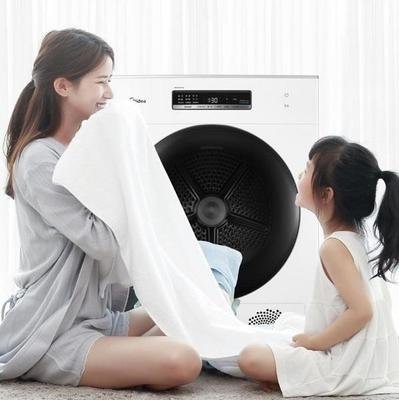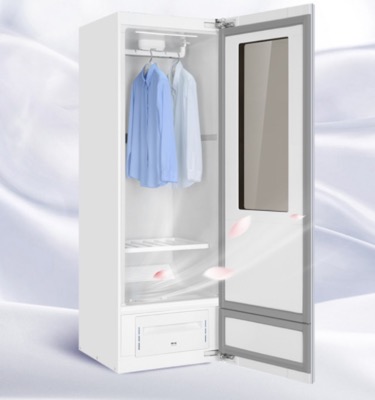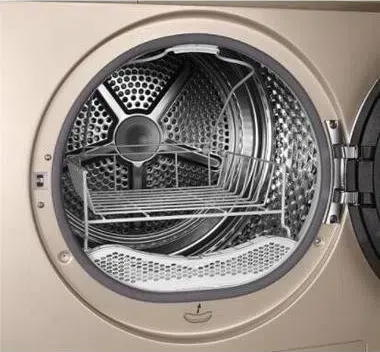
Content Menu
● Introduction
● Understanding Heat Pump Dryer Technology
● Energy Consumption and Cost Analysis
● Environmental Impact and Sustainability
● Maintenance and Longevity
● Practical Considerations for Buyers
● Conclusion
● Frequently Asked Questions
>> Q1: How much money can I save with a heat pump dryer?
>> Q2: Are heat pump dryers worth the higher upfront cost?
>> Q3: Do heat pump dryers require special installation?
>> Q4: How long do heat pump dryers last?
>> Q5: Do heat pump dryers take longer to dry clothes?
Introduction
Heat pump dryers represent a significant advancement in laundry technology, offering a more energy-efficient alternative to conventional dryers. As energy costs continue to rise and environmental consciousness grows, many consumers are considering whether investing in a heat pump dryer is financially beneficial in the long run.
Understanding Heat Pump Dryer Technology
Heat pump dryers operate on a fundamentally different principle compared to traditional dryers. They use a closed-loop system that recycles hot air, removing moisture through a condensation process. The system consists of an evaporator, condenser, and compressor working together to efficiently dry clothes while consuming significantly less energy. Unlike conventional dryers that expel warm air outside, heat pump dryers recirculate the air, making them not only more energy-efficient but also more versatile in terms of installation options.
The technology employs a refrigerant to transfer heat, similar to how your refrigerator works but in reverse. The process begins when warm, humid air from the drum passes through the evaporator, where the moisture condenses and is collected. The now-cool, dry air then moves through the condenser, where it's reheated before being circulated back into the drum. This continuous cycle ensures efficient drying while maintaining lower temperatures, which is gentler on clothes.

Energy Consumption and Cost Analysis
The energy efficiency of heat pump dryers is one of their most compelling features. These appliances typically use about 50% less energy than conventional electric dryers. This significant reduction in energy consumption translates directly into lower operating costs. While the initial purchase price of a heat pump dryer may be higher, the long-term savings on energy bills can make it a worthwhile investment.
For a typical household doing multiple loads of laundry per week, the energy savings can accumulate substantially over time. The actual cost savings will vary depending on local electricity rates, usage patterns, and the specific model of the dryer. However, many users report noticeable reductions in their monthly utility bills after switching to a heat pump dryer.
Environmental Impact and Sustainability
Beyond the financial benefits, heat pump dryers offer significant environmental advantages. Their reduced energy consumption means a smaller carbon footprint compared to conventional dryers. This aspect is particularly important as more households seek ways to reduce their environmental impact. The technology's efficient use of energy aligns with global efforts to combat climate change and promote sustainable living practices.
Additionally, heat pump dryers typically operate at lower temperatures, which helps preserve clothing quality and extend garment life. This indirect benefit contributes to sustainability by reducing the need for frequent clothing replacement and the associated environmental costs of textile production and disposal.

Maintenance and Longevity
Proper maintenance is crucial for ensuring optimal performance and longevity of heat pump dryers. Regular cleaning of filters and condensers is essential to maintain efficiency and prevent performance issues. While these maintenance requirements might seem more demanding than traditional dryers, they are necessary to preserve the energy-saving benefits and extend the appliance's lifespan.
The condensation system requires periodic emptying of the water container, although many models can be connected directly to a drain. The heat exchanger should be cleaned regularly to prevent lint buildup, which could affect performance and energy efficiency. When properly maintained, heat pump dryers can provide reliable service for many years, making them a durable investment.
Practical Considerations for Buyers
When considering a heat pump dryer, several practical factors should be evaluated. The initial cost is typically higher than conventional dryers, which means buyers need to consider their long-term usage patterns to justify the investment. Installation requirements are different from traditional vented dryers, as heat pump models don't require external venting. This can provide more flexibility in terms of placement within the home.
The drying time with heat pump dryers is generally longer than with conventional models, which might be a consideration for larger households or those with high-volume laundry needs. However, the gentler drying process and lower operating temperatures can help preserve fabric quality and reduce wear on clothes.
Conclusion
Heat pump dryers represent a significant advancement in laundry technology, offering substantial energy savings and environmental benefits. While the initial investment is higher, the long-term cost savings through reduced energy consumption make them an economically viable choice for many households. The technology's efficiency, combined with its gentle treatment of fabrics and flexible installation options, makes it an attractive option for environmentally conscious consumers looking to reduce their energy costs and carbon footprint.

Frequently Asked Questions
Q1: How much money can I save with a heat pump dryer?
A: Depending on usage and local energy rates, households can save 40-50% on energy costs compared to conventional dryers, potentially amounting to hundreds of dollars annually.
Q2: Are heat pump dryers worth the higher upfront cost?
A: Yes, for most households, the higher initial investment is offset by lower operating costs over time, typically breaking even within 3-5 years of regular use.
Q3: Do heat pump dryers require special installation?
A: No, they don't require external venting, making them more flexible for installation. However, they do need proper ventilation space and access to a drain or water collection container.
Q4: How long do heat pump dryers last?
A: With proper maintenance, heat pump dryers typically last 10-15 years, similar to or slightly longer than conventional dryers.
Q5: Do heat pump dryers take longer to dry clothes?
A: Yes, they generally take about 30-50% longer to dry clothes compared to conventional dryers, but this is offset by the energy savings and gentler drying process.












